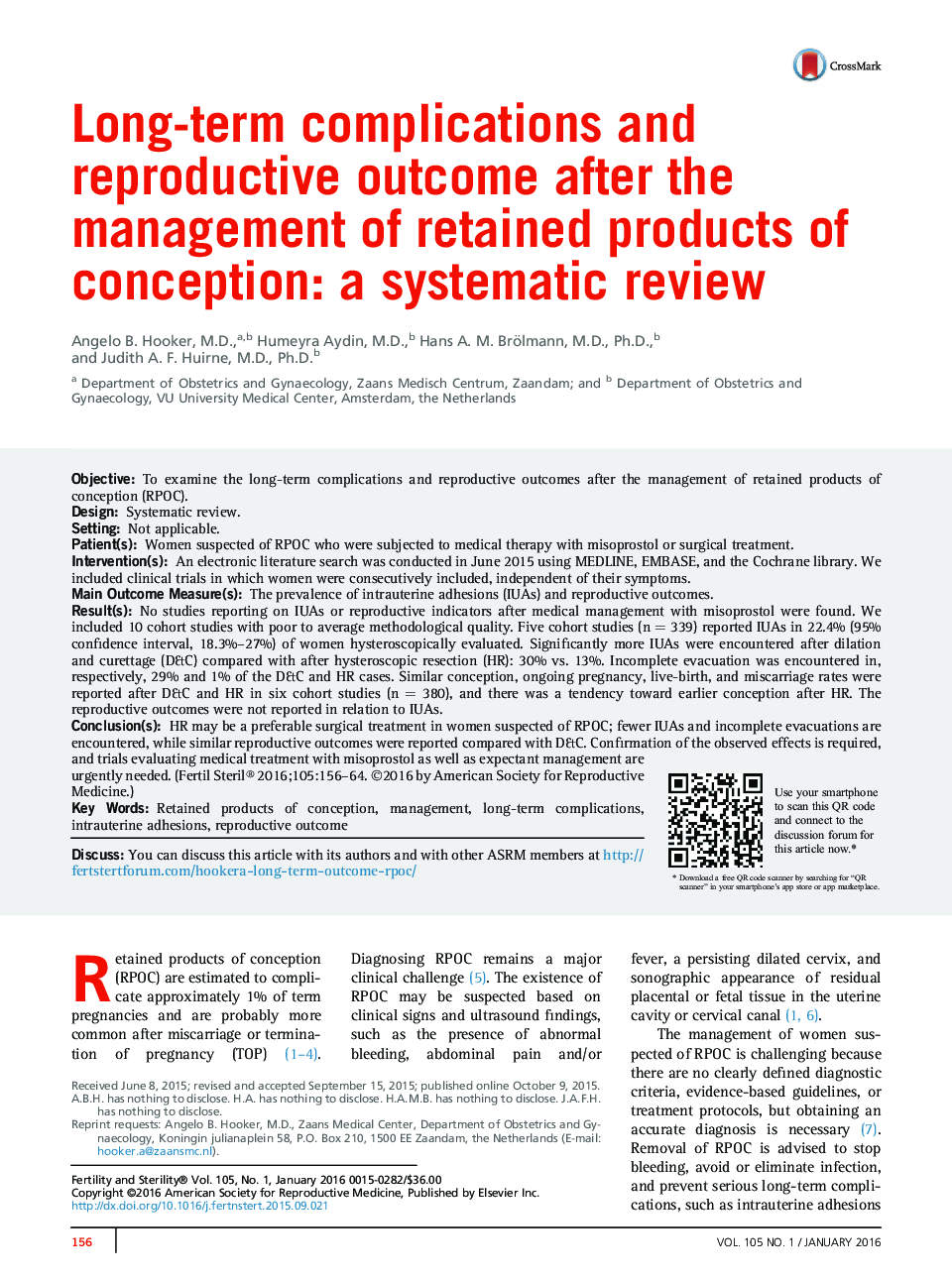| Article ID | Journal | Published Year | Pages | File Type |
|---|---|---|---|---|
| 6178589 | Fertility and Sterility | 2016 | 11 Pages |
ObjectiveTo examine the long-term complications and reproductive outcomes after the management of retained products of conception (RPOC).DesignSystematic review.SettingNot applicable.Patient(s)Women suspected of RPOC who were subjected to medical therapy with misoprostol or surgical treatment.Intervention(s)An electronic literature search was conducted in June 2015 using MEDLINE, EMBASE, and the Cochrane library. We included clinical trials in which women were consecutively included, independent of their symptoms.Main Outcome Measure(s)The prevalence of intrauterine adhesions (IUAs) and reproductive outcomes.Result(s)No studies reporting on IUAs or reproductive indicators after medical management with misoprostol were found. We included 10 cohort studies with poor to average methodological quality. Five cohort studies (n = 339) reported IUAs in 22.4% (95% confidence interval, 18.3%-27%) of women hysteroscopically evaluated. Significantly more IUAs were encountered after dilation and curettage (D&C) compared with after hysteroscopic resection (HR): 30% vs. 13%. Incomplete evacuation was encountered in, respectively, 29% and 1% of the D&C and HR cases. Similar conception, ongoing pregnancy, live-birth, and miscarriage rates were reported after D&C and HR in six cohort studies (n = 380), and there was a tendency toward earlier conception after HR. The reproductive outcomes were not reported in relation to IUAs.Conclusion(s)HR may be a preferable surgical treatment in women suspected of RPOC; fewer IUAs and incomplete evacuations are encountered, while similar reproductive outcomes were reported compared with D&C. Confirmation of the observed effects is required, and trials evaluating medical treatment with misoprostol as well as expectant management are urgently needed.
